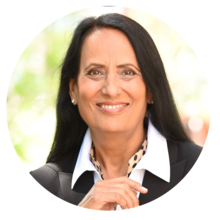About this Presentation
Several business environments, especially retail and distribuition, enjoy a regular spike in customers flow and demand during very short periods of the year, which are known as seasonality events. Therefore it behooves the company to capitalize on these opportunities. These events are an excellent opportunity to increase sales and margins but carry with it big challenges, notably for a supply chain where the reaction time is longer than the peak period. In that case, which accounts for the vast majority of the distribuition business environments, it’s necessary to “bet” based on a demand forecast for this period. But forecasting implies, by definition, risks (as it is impossible to accurately forecast in an environment where the number of SKUs and stock locations is very big). The usual practice (used by vast majority of the companies) is to forecast (long) in advance of the demand for these events and push the products to the sales locations (stores or warehouses). Despite that during the peak event these environments experience shortages of best sellers and overstocks of slow movers (the vast majority of the product portfolio) which are then liquidated after the event. Therefore the key challenge is “how we can capitalize on the peak events without incurring major risks? How can we maximize ROI? In order to address this challenge we performed an analysis based on actual data of 2012 Christmas event of a Fashion Retail Business in Brazil and we propose a seasonality strategy called “Deep and Narrow”. The analysis contemplates a way for classifying the product portfolio and addressing each type in a different way. We claim that this is a more effective way for answering the question above as it increases the availability of best sellers and at the same time reduce risks of overstocks (and consequently liquidation) of slow movers. In the end we propose a generic S&T tree entity for dealing with seasonality.
What Will You Learn
To help you get the most value from this session, we’ve highlighted a few key points. These takeaways capture the main ideas and practical insights from the presentation, making it easier for you to review, reflect, and apply what you’ve learned.

Instructor(s)
Guilherme Almeida

Ms Alka Wadhwa
Alka Wadhwa is an experienced consultant and process improvement expert with over 24 years of expertise in the Theory of Constraints (TOC), Lean Six Sigma, and organizational performance optimization. She has successfully led projects in healthcare, financial services, and manufacturing, driving significant improvements such as a 67% boost in hospital operations and a 140% increase in outpatient visits.
Previously, Alka Wadhwa spent 17+ years at GE Global Research Center, where she led initiatives to enhance various GE businesses through advanced technologies, process redesign, and system optimization. Founder of Better Solutions Consulting, LLC, she specializes in using TOC, Six Sigma, and data analytics to streamline operations and build high-performance teams.
Her work has earned her multiple accolades, including the Empire State Award of Excellence in healthcare.

Dr Gary Wadhwa
Dr. Gary Wadhwa is a Board Certified Oral & Maxillofacial Surgeon with extensive experience in the field. He completed his Oral & Maxillofacial Surgery training at Montefiore Hospital, Albert Einstein College of Medicine in Bronx, NY, and has served as an Attending at prestigious institutions like St. Peters Hospitals, Ellis Hospital, and Beth Israel Hospital in NY. With a career spanning over two decades, he was the former CEO and President of a group specialty practice in NY from 1994 to 2015. Dr. Wadhwa holds an MBA from UT at Knoxville, TN, and has undergone additional training in System Dynamics at MIT, Health System Management at Harvard Business School, and Entrepreneurship and healthcare innovations at Columbia Business School. Committed to expanding access to Oral & Maxillofacial Surgery care, he is currently engaged in a meaningful project to provide healthcare services to underserved populations in inner city and rural areas through non-profit Community Health Centers.
